Image of the Day Archives

For older Image of the Day pictures, please visit the Image of the Day archives. Pictured: NGC 2467.
Mysterious Traveller
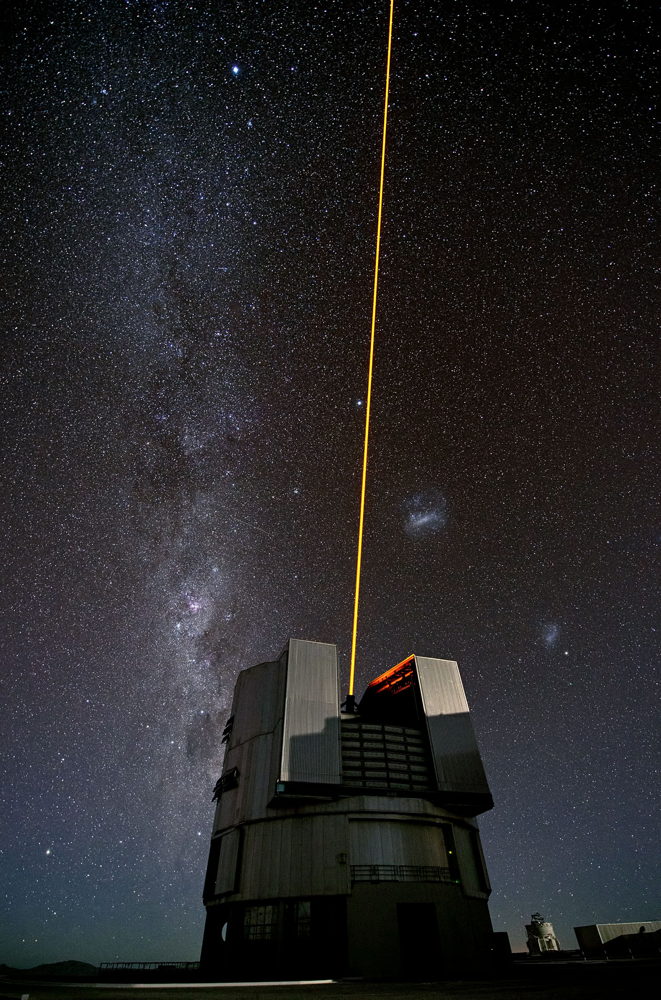
Friday, March 1, 2013: ESO's Very Large Telescope (VLT) tested a new laser on February 14, 2013. The laser will make up a vital part of the Laser Guide Star Facility (LGSF), which allows astronomers to correct for most of the disturbances caused by the constant movement of the atmosphere. A special celestial visitor also appears in this photo. Right of center, just below the Small Magellanic Cloud in this photo, a green dot glows with a faint tail stretching to its left. This is recently discovered Comet Lemmon, currently moving slowly through the southern skies.
— Tom Chao
Earth, Wind and Fire

Monday, March 4, 2013: A SpaceX Falcon 9 rocket carrying a Dragon capsule appears distantly in the clouds at the top center of this photograph. The rocket leaves behind a plume of smoke on the ground at Cape Canaveral Air Force Station in Florida. The rocket launched at 10:10 a.m. EST on March 1, 2013, delivering cargo to the International Space Station. After entering orbit, the spacecraft developed problems with its thruster pods. Eventually SpaceX was able to overcome the difficulty, and the Dragon docked at the space station, albeit later than planned.
— Tom Chao
Evil Eye?
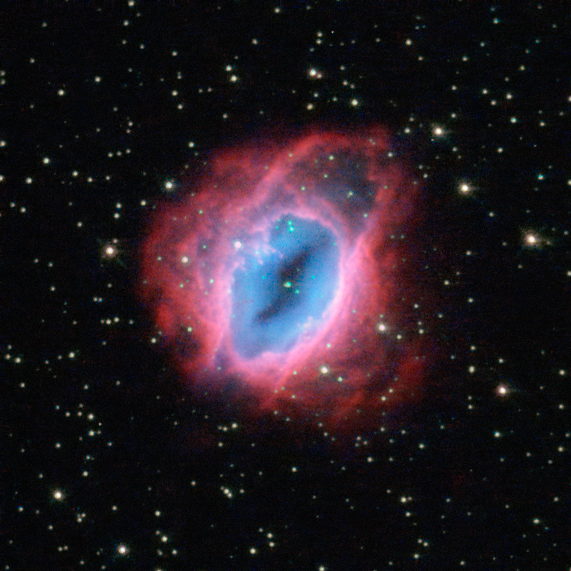
Tuesday, March 5, 2013: The Hubble Space Telescope shows planetary nebula ESO 456-67 glowing like a giant eye in space. A planetary nebula arises when a dying Sun-like star flings its shells of dust and gas into space. (A planetary nebula has nothing to do with planets, but the misleading nomenclature resulted from the confusion of early astronomers using weak telescopes.) ESO 456-67 lies in the southern sky. in the constellation of Sagittarius (The Archer).
— Tom Chao
Linger On, Your Pale Blue Lights
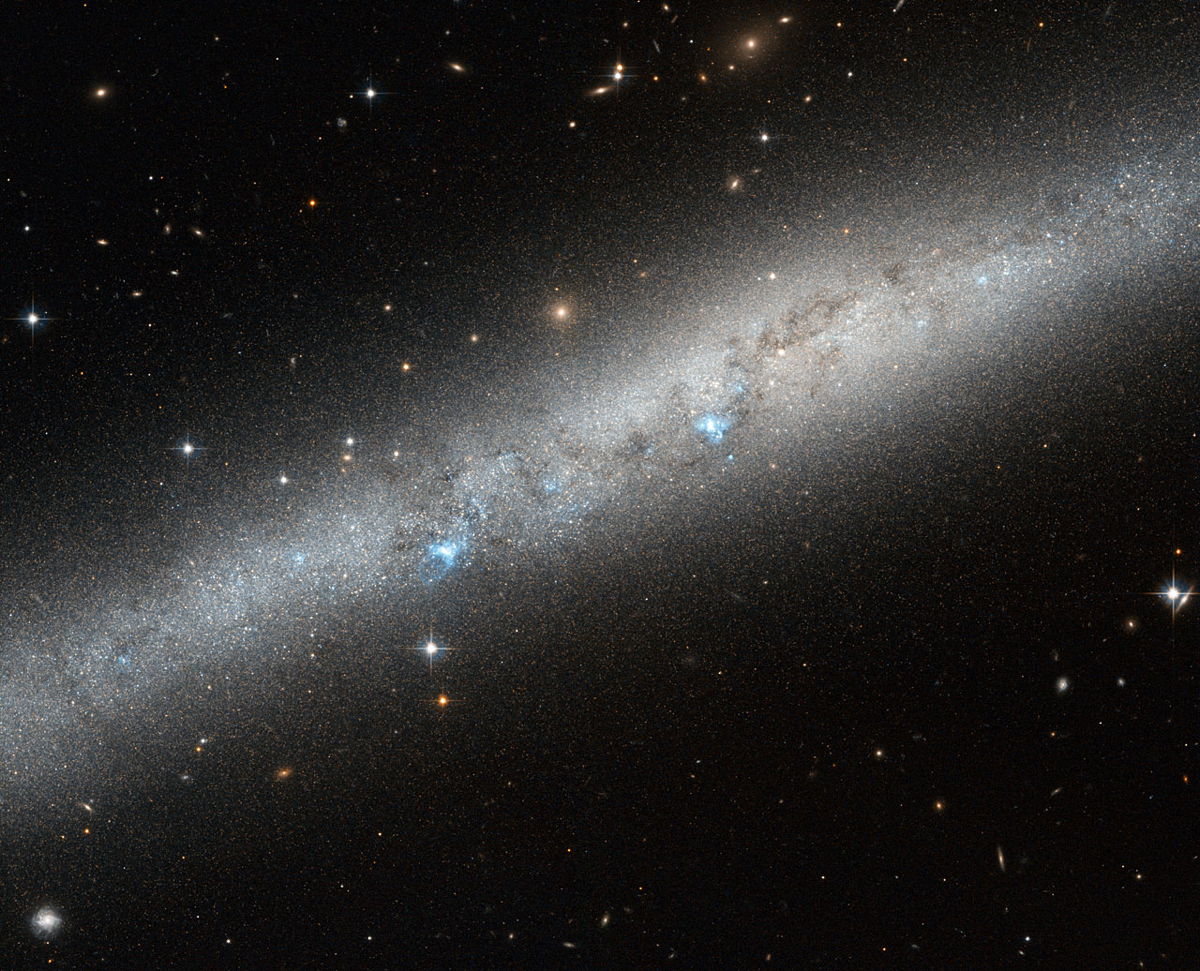
Wednesday, March 6, 2013: Part of spiral galaxy IC 5052 seen in this image shows speckles of blue, white, and yellow light. This barred spiral galaxy lies side-on to us in the constellation of Pavo (The Peacock), in the southern sky. Bursts of pale blue light gleam across the galaxy's length, partially blocked by lanes of darker gas and dust. The blue light marks pockets of extremely hot newborn stars.
— Tom Chao
When the Moon Hits Your Eye Like a Big Pisa Pie
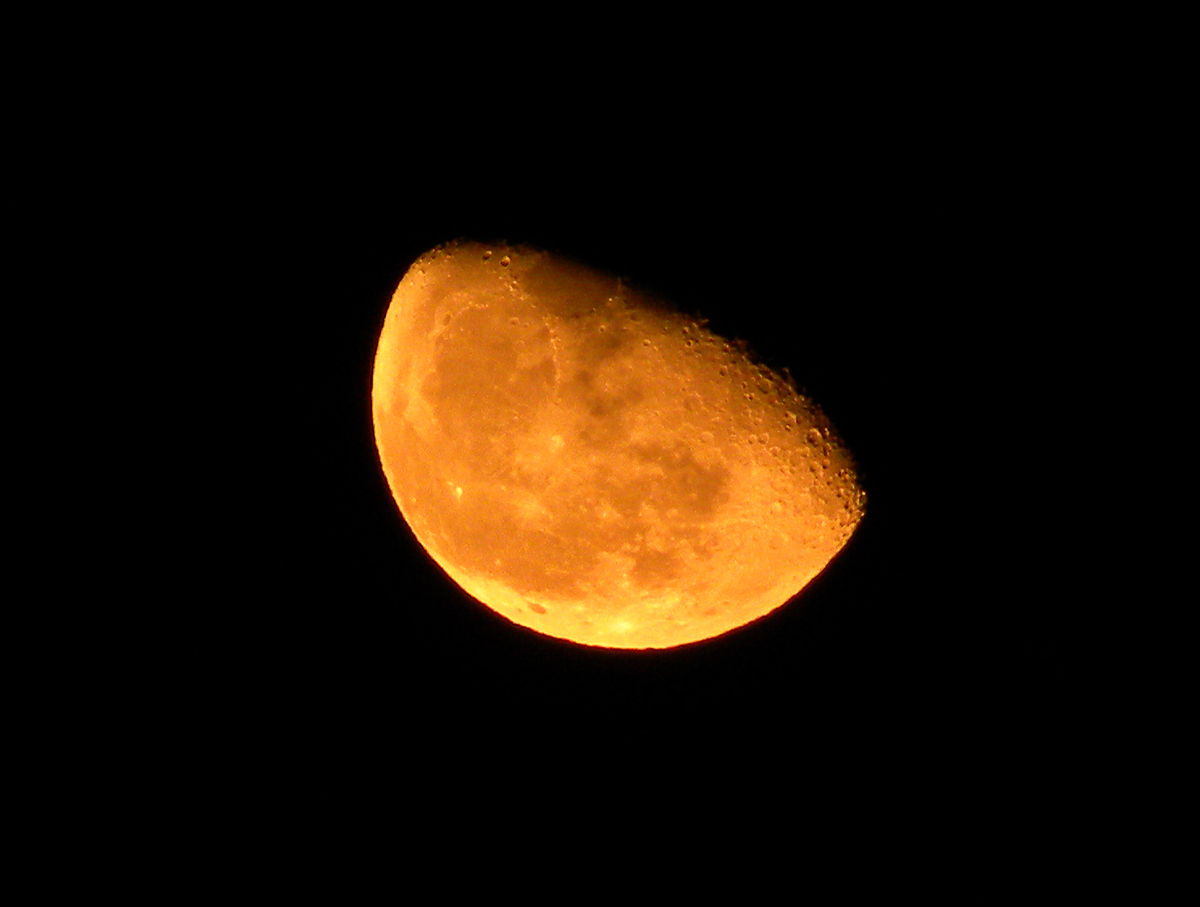
Thursday, March 7, 2013: Astrophotographer Giuseppe Petricca sent in a photo of the last quarter moon over Pisa, Italy, taken on March 2, 2013. He writes: “The scenery was wonderful, with the last quarter moon slowly climbing above the horizon, hiding briefly behind some thin clouds.... Really an enjoyable view, to say the least!”
— Tom Chao
Curl Up

Friday, March 8, 2013: Five coronal mass ejections (CMEs) blasted from the sun, Feb. 26-28, 2013. Caught by the SOHO spacecraft’s LASCO C2 coronagraph, the CMEs show considerable variation in shape and structure. In particular, the one at the right of the image shows a bright, elongated center, likely part of a solar filament, with an interesting shepherd’s crook (or bishop’s crosier) shape. In the image, the white circle represents the sun, and the red disk blocks out the sun and part of the corona.
— Tom Chao
Get the Space.com Newsletter
Breaking space news, the latest updates on rocket launches, skywatching events and more!
Minimum-Maximum
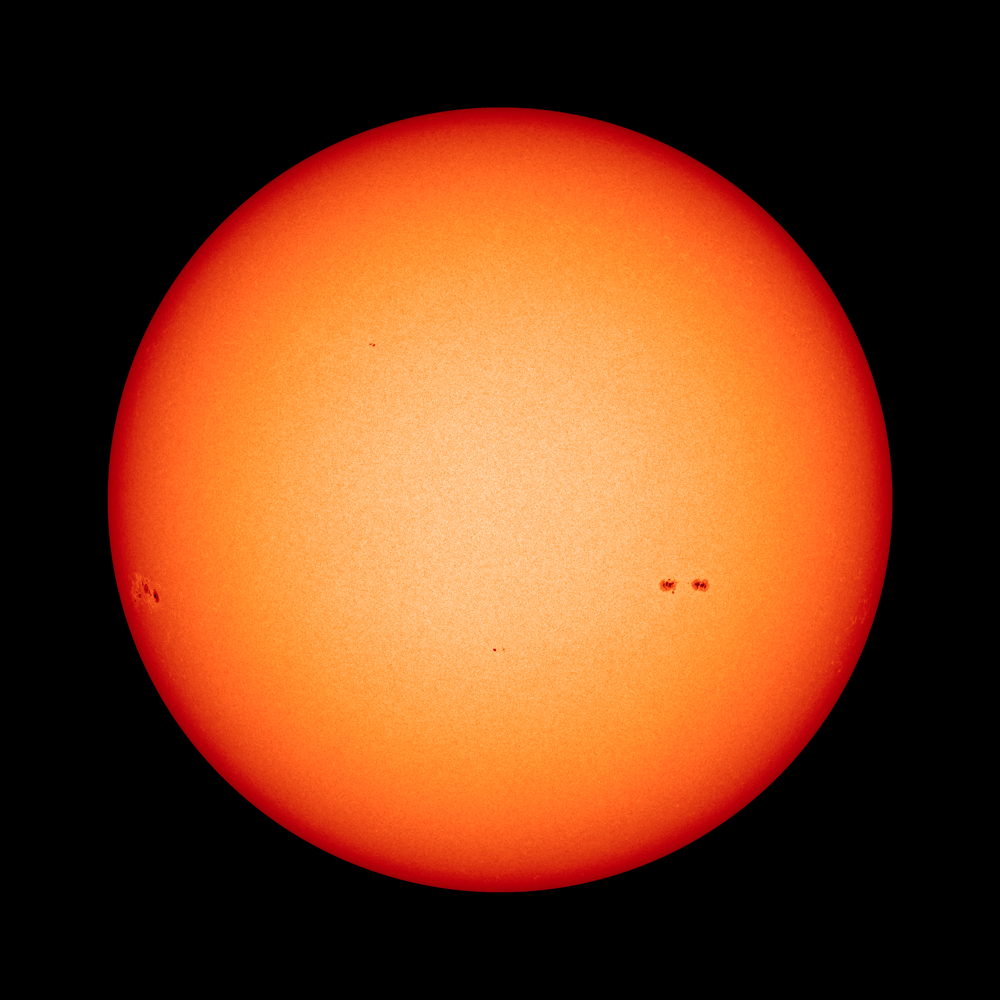
Monday, March 11, 2013: This year, 2013, marks the peak of the 11-year sunspot cycle. Yet solar activity remains relatively low. This image shows the Earth-facing surface of the sun on February 28, 2013, as observed by NASA’s Solar Dynamics Observatory. Only a few small sunspots appear, although many spots usually riddle the sun’s face during peak solar activity. Researchers recognize that the cycle does not repeat at precise 11-year intervals, taking from 10 to 13 years to complete, and varying in amplitude. Solar physicist Dean Pesnell of NASA’s Goddard Space Flight Center points out that we may be experiencing a double-peaked maximum, with the sunspot count jumping in 2011 and dipping in 2012. Says Pesnell: “I am comfortable in saying that another peak will happen in 2013 and possibly last into 2014.”
— Tom Chao
Slowly Unravels
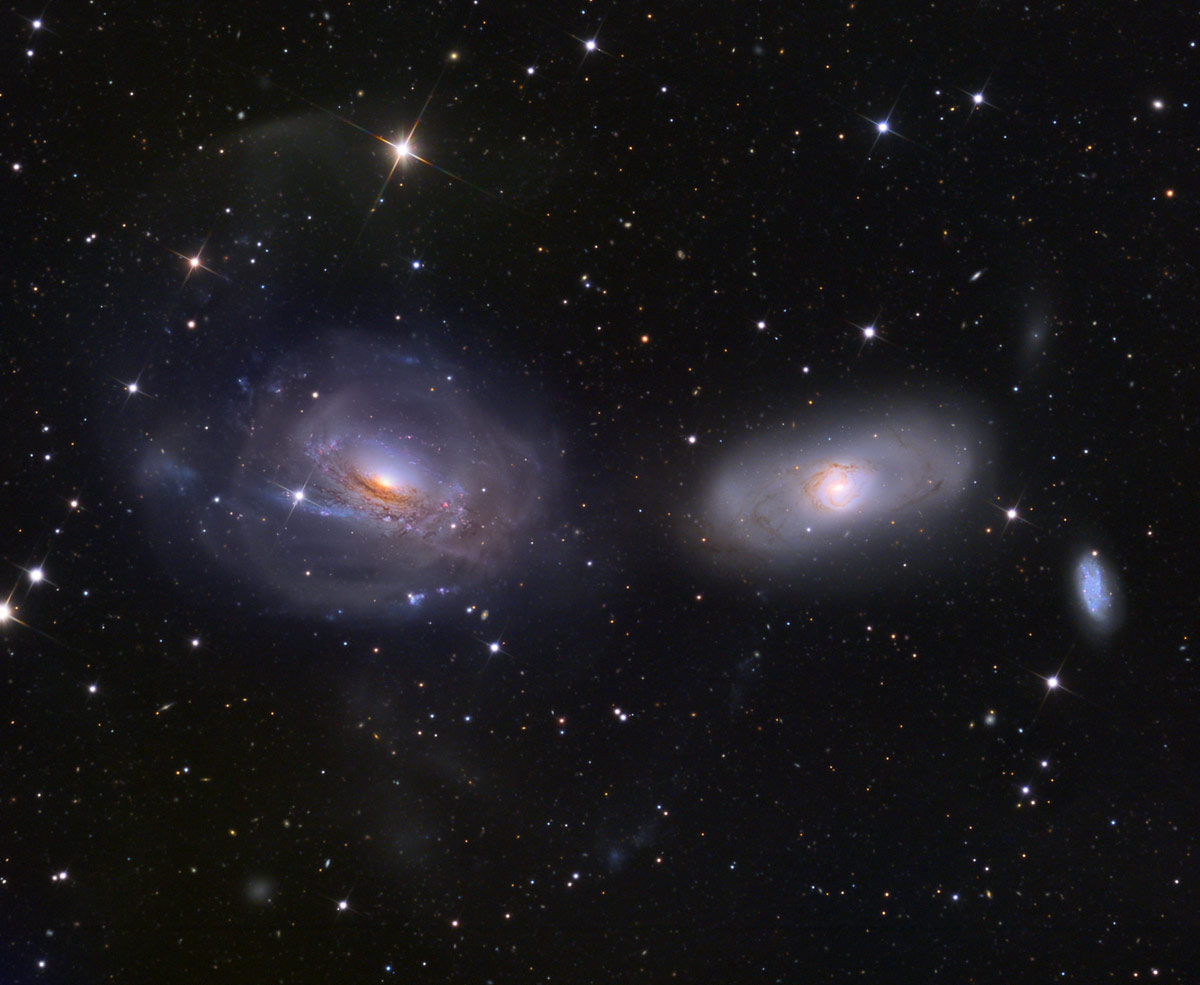
Tuesday, March 12, 2013: Astronomer Adam Block, of the Mount Lemmon SkyCenter located north of Tucson, AZ, sent in a photo of spiral galaxies NGC 3169 and NGC 3166. He writes: “This 27-hour cumulative exposure photograph shows just how strongly these two galaxies are interacting. Shells, plumes, arcs of stars and even shared dust lanes are some of the features that highlight this very deep image. NGC 3169 on the left appears to be literally unraveling before our eyes. Perhaps the arc of star clumps below the pair are the remnants of a smaller galaxy that orbited both of them. I am happy to have completed this image just before the flood of comet Pan-STARRS images begin to show up … “ Image submitted March 9, 2013.
— Tom Chao
Space and Time
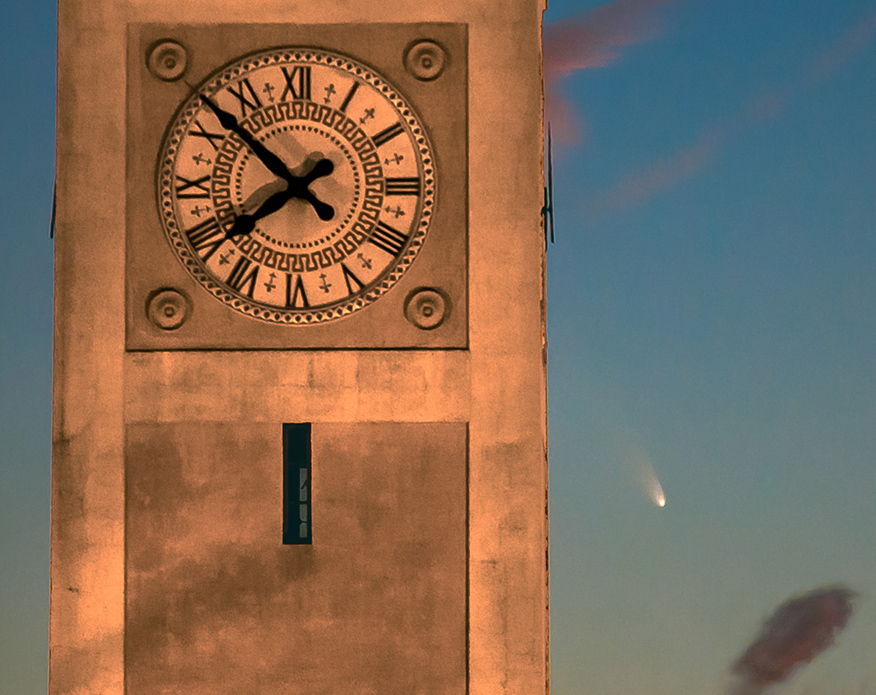
Wednesday, March 13, 2013: Astrophotographer Randy Paylor sent in a photo of Comet Pan-STARRS. He writes: "Taken on the campus of Louisiana State University, Baton Rouge, March 11th [2013], with the school's Memorial Tower clock in the foreground. [The photo] was shot across a big open quad to get the tower in the distance and near the horizon." [See full gallery.]
— Tom Chao
In With the In Crowd

Thursday, March 14, 2013: A full-scale model of the James Webb Space Telescope model went on display March 8-10, 2013, at the South by Southwest Interactive Festival in Austin, Texas. The telescope stretches a tennis court in length, and stands as tall as a four-story building, NASA's James Webb Space Telescope will succeed Hubble, and JWST represents the largest space telescope ever built.
— Tom Chao
Join our Space Forums to keep talking space on the latest missions, night sky and more! And if you have a news tip, correction or comment, let us know at: community@space.com.










